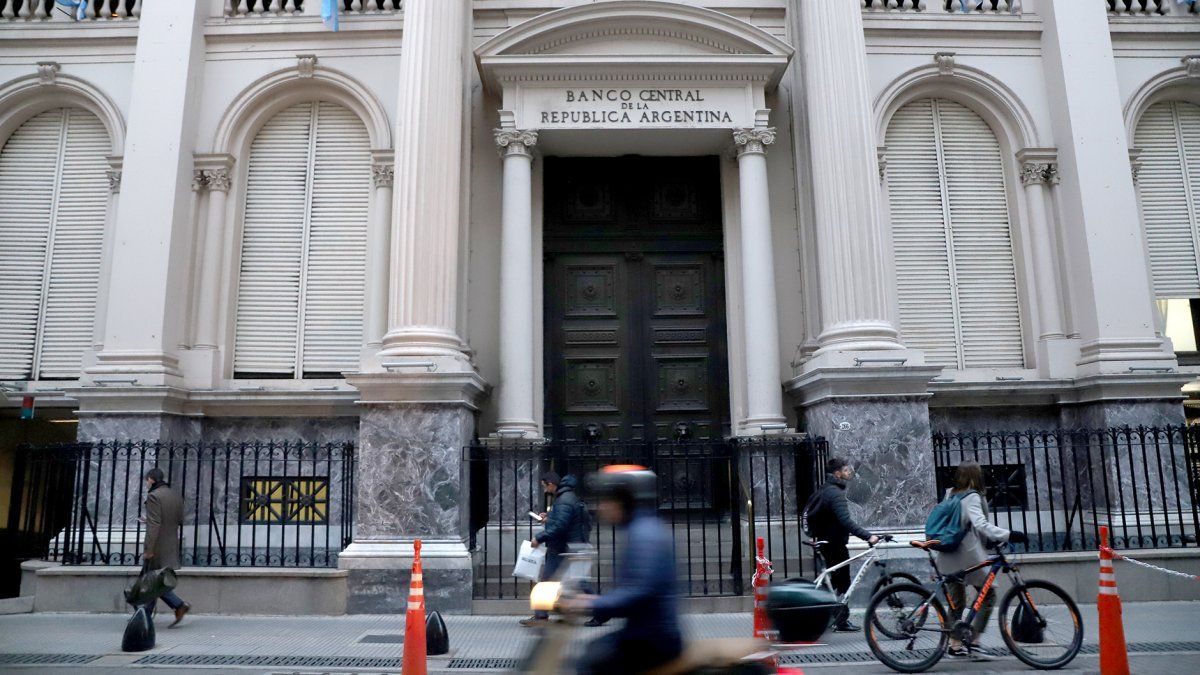Since September of last year (six months ago), the BCRA did not touch the yield percentage of fixed terms. On that occasion, it had brought the Nominal Annual Rate (TNA) to 75% and the effective one to 107%, which guaranteed, throughout all these months, interest for savers of 6.2% per month. Until last month, when inflation was 6%, it was still beating inflation. But the February data broke that beneficial relationship for savers, who lost 0.6% against that index.
WhatsApp Image 2023-03-16 at 16.55.01.jpeg
*LI: Investment Line / PF: Fixed Term – SOURCE: BCRA
“The decision of BCRA arises as a response to the fact that, in February, actual performance ex post (compared to previous inflation) of the monetary policy rate turned negative in the short term (-0.3% of TEM). Furthermore, considering the rise in Core inflation -the most relevant measure for the BCRA- the negative bias was even greater (-1.3% of TEM)”, analyzes Ecolatina economist Santiago Manoukian.
With these numbers on the table, a large part of the market evaluates the BCRA measure as a moderate risesince the new monthly yield of the fixed term there is something below February inflation released by the National Institute of Statistics and Censuses (INDEC), which was 6.6%. And this kind of disappointment lies in the fact that, taking this data into account, many analysts expected this Thursday’s adjustment to be between 5 and 7 points so that the rate would be above the price hike level of last month.
This confirms it to Ambit the economist and director of EcoGo Sebastián Menescaldi, who points out that “the rise is located at the lower limit of what the market expected and is tying inflationConsequently, he believes that it is an adjustment that what he seeks is to comply with the International Monetary Fund (IMF), which requested a positive real rate to make the planned disbursements.
This is in line with the fact that, according to Manoukian, “with the arrival of Sergio Massa to Economy, the authorities reinforced the role of the rate of interest within its economic policy set, aiming to tend towards the positive real yields agreed with the IMF, contain inflationary pressures and avoid a discreet jump in the official exchange rate”.
Fixed term: how is the rate compared to annual inflation?
However, several analysts they anticipated that the rise that could be conservative due to the fact that some variables of the economy can help to justify this level of increase. The first is that, although Pablo Ferrari, from the University of Avellaneda, explains that “the fixed term is usually thought of based on short-term performance and not annual because the saver renews it month by month”, the new ASD (113.2%) is located above the interannual inflation data of 102.5% registered in the second month of this year.
It was also set above what the REM for February expects, which projects an average monthly inflation of 5.9% for the next 7 months and a 100% annual by 2023. In other words, although the saver will match inflation in February, in the annual total, he would come out ahead, against the past data and in view of the analysts’ projection for this year. However, this forecast was prior to the spread of 6.6% in the second month of the year, which was released this week.
Manoukian mentions, on the other hand, that “because of how the rate broker that the economic team manages, the existing gap between the LEDES rate and the LELIQ had been increasing, giving the BCRA ample room for maneuver for this new rate hike, without violating the Treasury’s need to continue capturing liquidity”.
Dollar peso fusion.jpg

On the other hand, the economist from Equilibra Lorenzo Sigaut Gravina states that, from the Government they can allege that the inflation data for February was so high as a consequence of the shock of readjustment of the price of meat that occurred during the month. “Based on this concept, the BCRA could justify having applied a moderate rate hike instead of a more aggressive one, despite the high price rise data from last month,” he says.
And it is that, according to official sources, meats accounted for 1.3 percentage points of the 0.6 of the general level of the Consumer Price Index (CPI), while other foods, such as vegetables, slowed. It should be remembered, on the other hand, that last month the central argument of the BCRA to keep the MPR unchanged was that core inflation had been at a level similar to that of December (5.4%, +0.1 pp). However, in February, the core inflation was very high and stood at 7.7% (against 5.4% in January), but, again, in this case the acceleration of meat had a strong incidence, which explained 2 points of the 2.3 that increased, according to official calculations.
In that sense, The BCRA’s measure of raising the fixed-term rate by just 3 points would consider this shock as a momentary element which affects inflation and could be in line with an expectation that, in March, the data will be a little betteralthough possibly still starting with 6 percent.
The BCRA, between inflation and LELIQ
The problem is that, as the economist Juan Pablo Albornoz, from Invecq warns, “the macro is giving very clear signs that nominality is getting out of control” and, taking these data into account, for many the rise of 3 points is insufficient. Likewise, Manoukian points out that, for March, Ecolatina expects inflation approaching 7%.
However, beyond that, for the financial and business analyst Salvador Di Stéfano, a fact that should not be left out is that the rise in the rate of LELIQ (which is a side effect of improving the performance of the fixed term) is worrying because “monetary liabilities are increasing in a context in which it is very likely that the BCRA reserves will remain flat.” And, in this sense, he warns that the effect this has on the exchange rate gap will have to be closely monitored. The problem is that the entity’s liabilities are a big “alert” poster, today, in the financial regulator’s balance sheet and this rise in LELIQ rates would hurt it even more.
However, taking into account the current inflationary inertia, Manoukian assesses that, “despite its quasi-fiscal costs (it will increase the issuance associated with interest paid by remunerated liabilities), the measure is going in the right direction.”
On the other hand, usually a rise in fixed-term rates would result in an increase in the cost of credit, which is another problem for the Argentine economy because it strongly affects people’s pockets and consumption, a serious problem, especially in an election year. However, the BCRA decided to seek that the impact is not so strong in this sense by leaving the rates of the line of productive investment (for companies) and the cards unchanged, which are a great source of financing today for companies. families and, on this occasion, they were left unchanged.
Source: Ambito
I am a 24-year-old writer and journalist who has been working in the news industry for the past two years. I write primarily about market news, so if you’re looking for insights into what’s going on in the stock market or economic indicators, you’ve come to the right place. I also dabble in writing articles on lifestyle trends and pop culture news.




